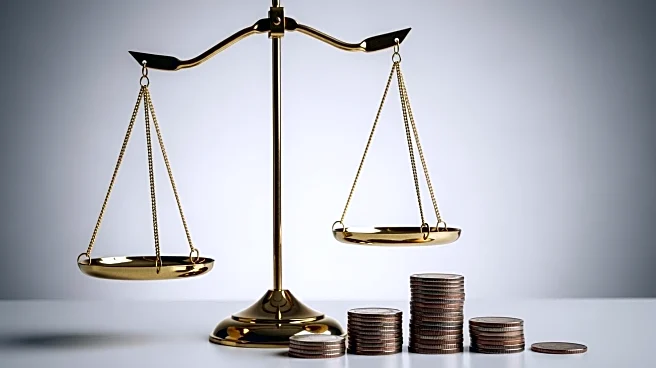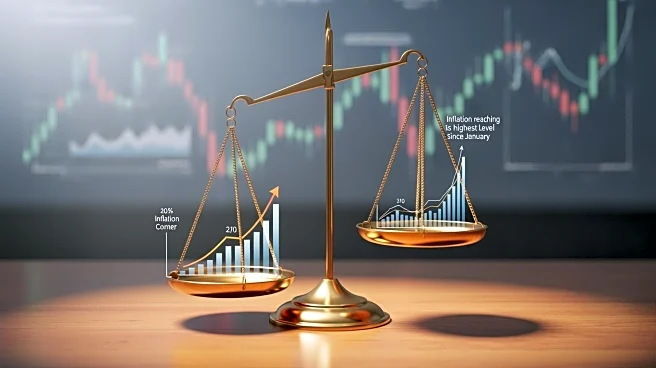What's Happening?
The Federal Reserve is expected to implement a series of interest rate cuts after recent data indicated that inflation rose less than anticipated. The Consumer Price Index (CPI) increased by 3.0% over
the past year through September, slightly below the 3.1% forecasted by economists. This development has led traders to predict with near certainty that the Fed will reduce its policy-rate range to 3.75%-4.00% in the upcoming meeting. The softer inflation figures have provided reassurance to the Fed's policymakers that easing borrowing costs will not trigger a resurgence in inflation, allowing them to focus on supporting the labor market.
Why It's Important?
The anticipated rate cuts by the Federal Reserve are significant as they reflect the central bank's strategy to balance inflation control with economic growth. Lower interest rates can stimulate economic activity by making borrowing cheaper for consumers and businesses, potentially boosting spending and investment. However, this approach also carries the risk of overheating the economy if inflation accelerates unexpectedly. The decision to cut rates is particularly crucial for sectors sensitive to interest rates, such as housing and consumer finance, which could see increased activity as a result.
What's Next?
The Federal Reserve's next steps will likely involve monitoring economic indicators closely to assess the impact of the rate cuts. If inflation remains subdued, further rate reductions could be on the table, with traders already pricing in a high probability of additional cuts in December and January. The Fed's actions will be closely watched by financial markets, policymakers, and businesses, as they navigate the complex interplay between inflation, employment, and economic growth.











